You’ll find the best ski watches for vertical tracking include the Garmin Enduro 3 with 320+ hours of solar GPS, Garmin Fenix 7 Pro Solar featuring preloaded resort maps, and Suunto Vertical offering specialized slope angle analysis. The Garmin Instinct 3 Solar provides military-grade durability with multi-band GPS precision, while the Apple Watch Ultra delivers aerospace-grade construction with barometric altimeter. Fitbit Versa offers budget-friendly GPS tracking, and Garmin’s Fenix Series excels in cross-country capabilities. Each model’s unique features cater to different skiing styles and budgets.
Garmin Enduro 3: Premium GPS Tracking for Serious Skiers
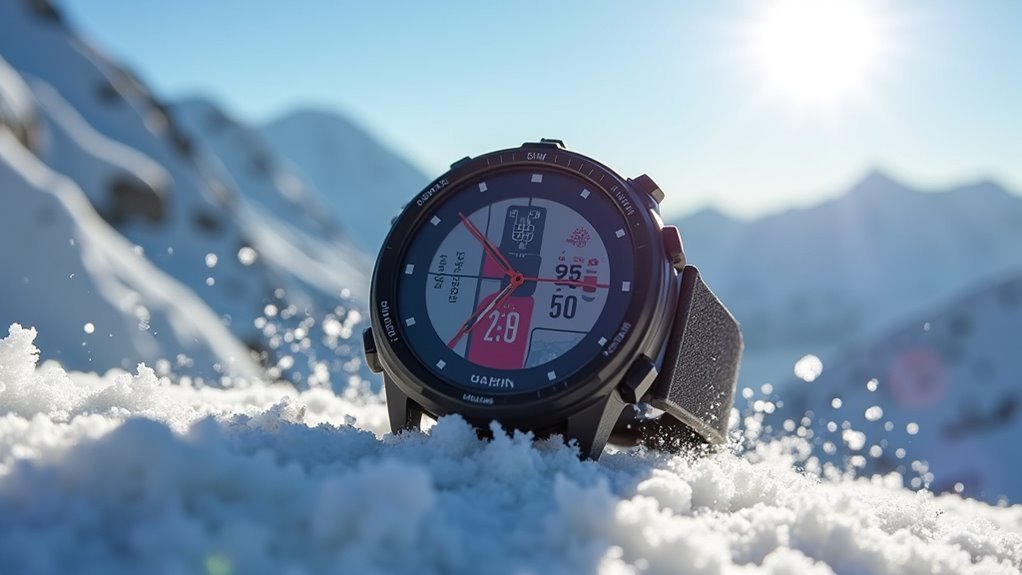
While most ski watches prioritize basic tracking features, the Garmin Enduro 3 delivers premium GPS capabilities designed specifically for serious skiers who demand extensive performance data.
You’ll get over 320 hours of solar GPS tracking, ensuring you never lose signal during extended backcountry adventures. The watch includes dedicated skiing modes with ClimbPro ascent planning and PacePro guidance to optimize your performance on challenging terrain.
Its preloaded TopoActive maps provide detailed topographic navigation, while NextFork alerts keep you on track at vital intersections.
You’ll monitor advanced metrics like VO2 max, training load, and altitude acclimation through the Elevate V5 heart rate sensor. The Gen5 optical HR sensor also provides ECG capabilities and wrist temperature measurements for comprehensive health monitoring.
The titanium construction withstands harsh mountain conditions, operating reliably from -20°C to 45°C while maintaining 10 ATM water resistance for wet snow conditions.
Garmin Fenix 7 Pro Solar: Resort Maps and Advanced Metrics
Though designed for multi-sport athletes, the Garmin Fenix 7 Pro Solar excels as an all-encompassing ski tracking device that combines detailed resort maps with advanced performance metrics.
You’ll benefit from preloaded TopoActive maps and ski resort coverage that’ll guide you through complex terrains and backcountry areas. The multi-band GPS with SatIQ technology guarantees precise positioning while optimizing battery life.
You can track vertical climbing data, monitor your hill score, and receive real-time stamina updates during active sessions. The watch also features enhanced weather overlays displaying precipitation, temperature, wind, and cloud conditions directly on your maps for better slope planning. The built-in LED flashlight enhances safety during early morning or evening runs.
With solar charging, you’ll get up to 22 days of battery life when exposed to three hours of daily sunlight, making it perfect for extended ski trips.
Suunto Vertical: Slope Angle Analysis and Backcountry Features
The Suunto Vertical takes ski tracking to another level with specialized slope angle analysis and thorough backcountry features that cater specifically to advanced skiers and mountaineers.
Advanced ski tracking meets mountaineering precision with specialized slope analysis and comprehensive backcountry features for serious outdoor athletes.
You’ll benefit from dual frequency technology that enhances GPS signals in challenging mountain terrain, while multi-satellite system support guarantees faster, more reliable tracking.
The watch’s 32GB storage provides offline maps so you won’t lose your way without internet.
You’ll particularly appreciate the avalanche terrain maps that help evaluate risks during backcountry skiing adventures.
With 100m water resistance and up to 85 hours of exercise tracking using solar charging, you’re equipped for extended mountain expeditions.
The device also offers customizable displays and real-time guidance through the Suunto app. The watch includes essential navigation tools like an altimeter, barometer, and compass that provide crucial spatial awareness when skiing in demanding mountain environments.
Garmin Instinct 3 Solar: Topographic Maps With Solar Charging
Ruggedness meets innovation in the Garmin Instinct 3 Solar, which delivers multi-band GPS precision and solar-powered endurance for serious ski enthusiasts. You’ll get enhanced vertical tracking accuracy on slopes where single-band GPS struggles, thanks to SatIQ technology that adapts to challenging terrain.
| Feature | Capability | Ski Benefit |
|---|---|---|
| Multi-band GPS | SatIQ precision tracking | Accurate vertical stats on slopes |
| Solar charging | Nearly unlimited battery | Extended backcountry trips |
| MIL-STD-810 build | Military-grade durability | Withstands alpine conditions |
However, you won’t find full topographic maps—only breadcrumb trails and basic waypoints. You’ll need to import GPX files for advanced navigation. The MIP display maximizes solar efficiency, giving you weeks of battery life during sunny ski tours without charging cables. The watch operates with a 5-button layout instead of touchscreen functionality, ensuring reliable control even while wearing heavy ski gloves in harsh weather conditions.
Garmin Fenix Series: Cross-Country and Downhill Capabilities
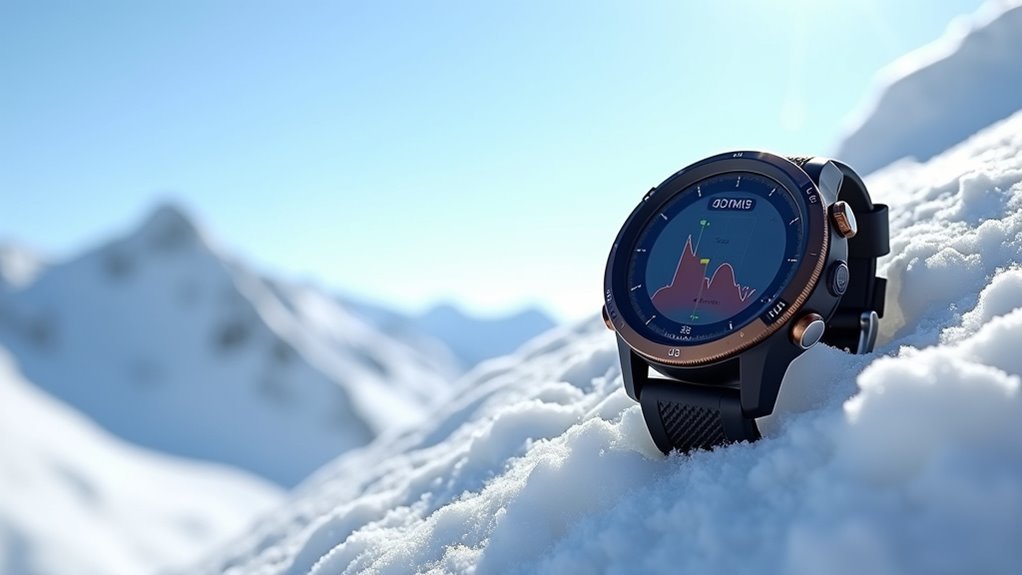
You’ll find the Garmin Fenix series delivers exceptional GPS tracking precision through its multi-satellite support and advanced sensors, making it ideal for recording accurate vertical stats on both cross-country and downhill terrain.
The watches offer dedicated multi-sport ski modes that automatically differentiate between climbing and descending segments while tracking essential metrics like elevation gain, speed, and heart rate. The Advanced Auto Run feature works alongside normal Auto Run to provide detailed activity tracking that records data like time, distance, max speed, and descent for each individual run.
With robust battery life performance, you can confidently tackle full-day skiing sessions without worrying about power drainage during extended backcountry adventures.
GPS Tracking Precision
Modern Garmin Fenix watches deliver impressive GPS tracking capabilities that transform how you monitor your skiing performance across different terrains.
You’ll get detailed metrics including speed, distance, descent, and location data during both cross-country and downhill sessions.
However, you should understand these precision considerations:
- Satellite System Selection – You can use GPS alone or combine it with GLONASS/Galileo, though some users report accuracy issues with GLONASS.
- Real-Time Limitations – You might experience GPS delay in speed tracking, affecting immediate feedback during runs.
- Environmental Factors – Dense foliage and steep backcountry terrain can reduce GPS accuracy compared to open ski resort areas.
You can correct altitude drift post-activity through Garmin Connect, and the barometric altimeter provides more reliable elevation data than GPS positioning alone. Some users report barometer performance issues that can lead to misinterpretation of lift rides and ski runs, particularly affecting vertical gain calculations with errors of 10-20% during skiing activities.
Multi-Sport Ski Modes
When you switch between different skiing disciplines, the Garmin Fenix series adapts seamlessly with specialized tracking modes designed for each activity type.
You’ll find downhill skiing and snowboarding automatically activate the auto run feature, detecting new runs when you’re moving downhill without any manual intervention.
For cross-country skiing, you’ll need to manually select the appropriate mode to guarantee accurate tracking of your technique and terrain variations.
The backcountry skiing mode offers customizable tracking options that distinguish between climbing and descending phases of your adventure. During your runs, you can access comprehensive run details by selecting ‘View Runs’ from the menu to review metrics for your last run, current run, and total runs.
You can create personalized activity profiles for different skiing environments, adjusting data fields to display the metrics that matter most to your specific discipline.
This flexibility guarantees you’re getting precise, relevant data whether you’re carving groomers or exploring untouched powder.
Battery Life Performance
Battery performance becomes a critical factor when you’re spending full days on the mountain tracking your skiing activities with a Garmin Fenix watch.
You’ll get impressive longevity from these devices, with models like the Fenix 7 Series delivering up to 18 days in standard use and solar variants extending to 38 days with ideal charging conditions.
When you’re actively skiing, here’s what affects your battery life:
- GPS intensity – Downhill skiing with frequent elevation changes drains more power than cross-country’s steadier tracking.
- Solar assistance – Reflective snow conditions can actually boost your battery levels on sunny days.
- Power management – Disabling non-essential features like always-on display and Wi-Fi maximizes your runtime.
You can expect a full ski day (8-10 hours) of GPS tracking without needing to recharge. The built-in wrist-based heart rate monitoring will also contribute to overall battery consumption during your mountain adventures.
Apple Watch Ultra: Mountain Sports and Elevation Tracking
Built with aerospace-grade titanium construction, the Apple Watch Ultra stands as Apple’s most rugged timepiece designed specifically for extreme outdoor adventures. You’ll get precise elevation tracking through its always-on barometric altimeter combined with multi-GPS capabilities including L1/L5, GLONASS, Galileo, and BeiDou systems.
| Feature | Specification | Mountain Sports Benefit |
|---|---|---|
| Water Resistance | 100 meters | Reliable in snow/rain conditions |
| Dust Protection | IP6X certified | Functions in harsh alpine environments |
| GPS Accuracy | Multi-satellite tracking | Precise location and elevation data |
| Emergency Features | International SOS calling | Critical safety backup |
The watch delivers exceptional visibility in bright mountain conditions with its 3000 nits brightness display that cuts through intense sunlight and snow glare. While you’ll find thorough workout tracking and blood oxygen monitoring, elevation readings can vary up to 150 feet depending on weather conditions and GPS signal quality, requiring occasional calibration for ideal accuracy.
Fitbit Versa: Budget-Friendly Option for Basic Ski Metrics
For skiers seeking solid performance without the premium price tag, the Fitbit Versa delivers essential mountain metrics at a fraction of the cost of high-end alternatives.
You’ll get built-in GPS for accurate distance tracking and an altimeter that records elevation changes during your runs. The multi-path optical heart rate sensor monitors your exertion levels, while the water-resistant design handles snowy conditions without issues.
The AMOLED display stays clear in various lighting conditions on the mountain. The device offers approximately 5 days battery life even with regular GPS use, minimizing charging interruptions during ski trips.
The Versa’s budget-friendly approach means you’ll access these core skiing features:
- Basic vertical tracking through the built-in altimeter
- Distance and pace monitoring via GPS capability
- Heart rate data for fitness insights during ski sessions
While it won’t match specialized ski watches’ advanced features, you’ll get reliable performance for fundamental mountain metrics.
Frequently Asked Questions
How Accurate Are Ski Watch Vertical Distance Measurements Compared to Resort Data?
Your GPS watch’s vertical measurements can differ considerably from resort data, often by 100+ meters. You’ll find discrepancies due to satellite signal quality, measurement methodologies, and terrain interference affecting accuracy.
Can Ski Watches Track Vertical Stats While Snowboarding or Only Skiing?
You’ll find ski watches track vertical stats for both skiing and snowboarding. They don’t distinguish between activities – the altimeter and GPS simply measure vertical descent regardless of what’s strapped to your feet.
Do Ski Watches Work Properly in Extreme Cold Mountain Temperatures?
Yes, ski watches work properly in extreme cold mountain temperatures. Modern models withstand temperatures as low as -10°F, with quartz movements offering superior cold resistance compared to mechanical watches in harsh alpine conditions.
How Long Does Battery Last When Continuously Tracking Vertical Skiing Stats?
When you’re continuously tracking vertical skiing stats, your watch’s battery typically lasts much shorter than normal use. You’ll get around 10-20 hours depending on your model’s efficiency and GPS intensity.
Can Multiple Skiers Share Data From One Watch During Group Trips?
You can’t share real-time data from one watch among multiple skiers. Each person needs their own device to track vertical stats, though you can manually share exported data afterward through apps like Strava.
In Summary
You’ll find the perfect ski watch among these seven options based on your specific needs and budget. Whether you’re tracking backcountry adventures with the Suunto Vertical’s slope analysis or monitoring resort runs with the Fenix 7 Pro’s detailed maps, there’s a watch that’ll match your skiing style. Don’t overlook the Apple Watch Ultra if you’re already in Apple’s ecosystem, or consider the budget-friendly Fitbit Versa for basic metrics.

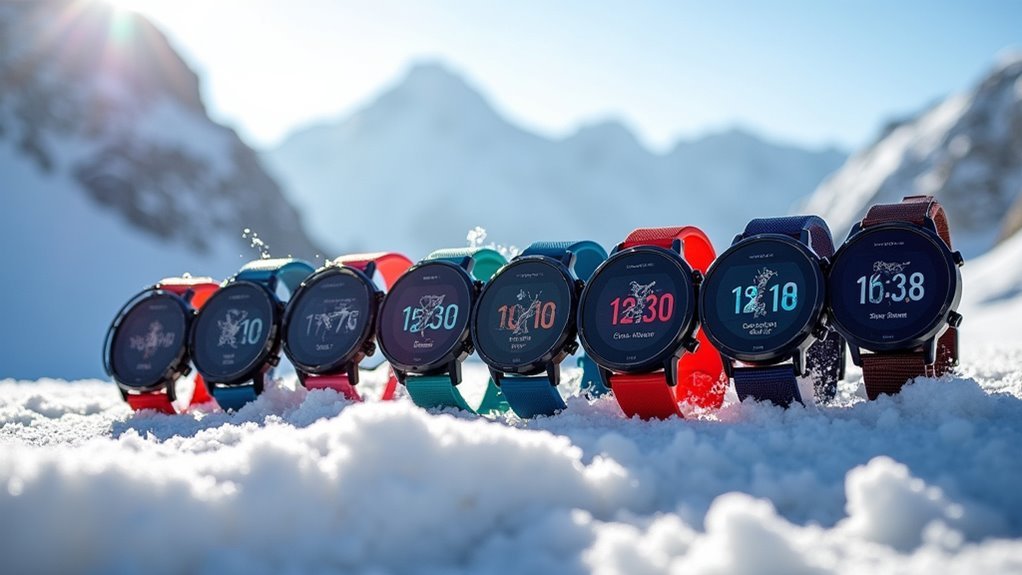

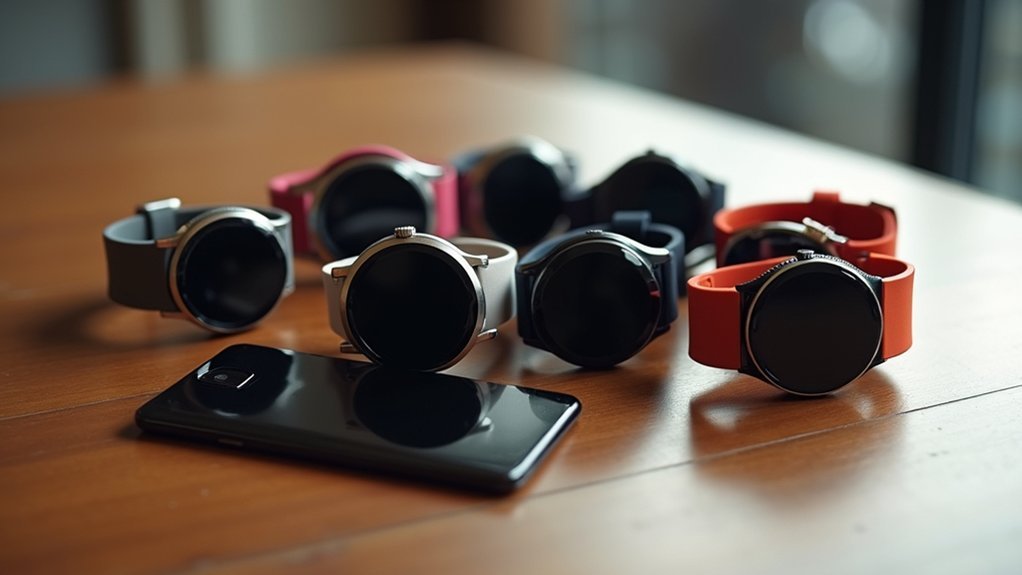
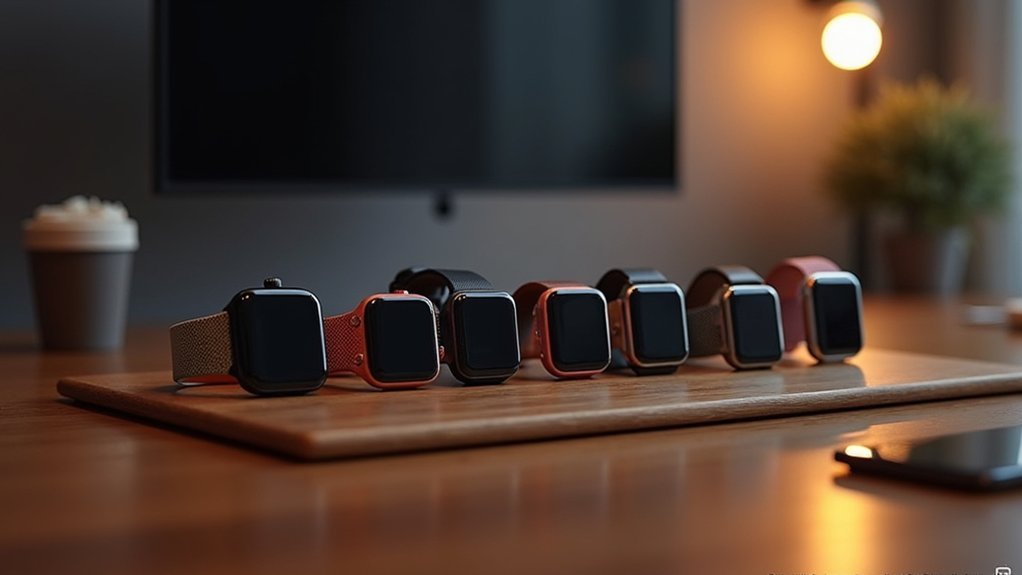
Leave a Reply